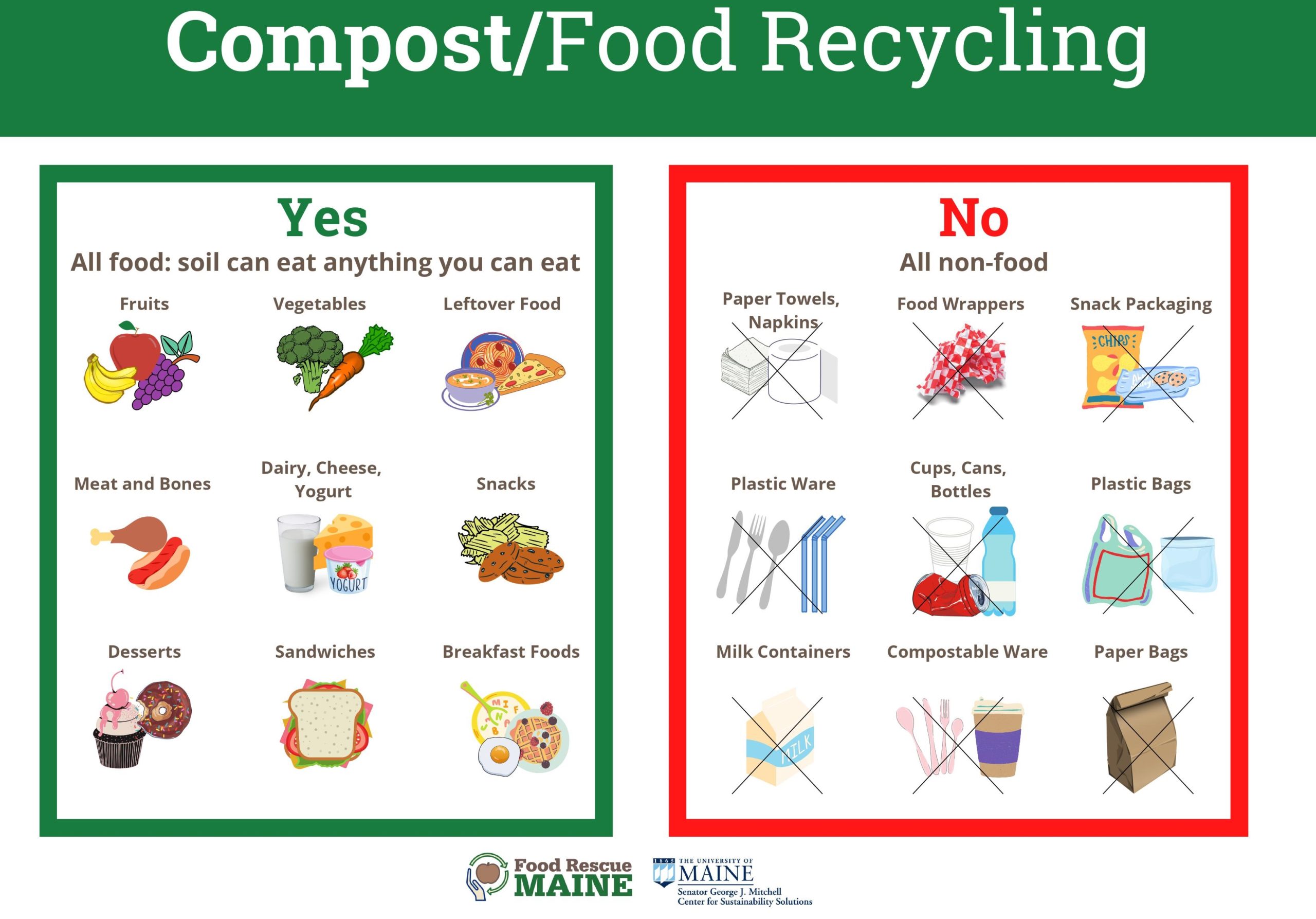Imagine giving soil the legal protections that air, water and marine ecosystems have. That’s the momentous step the European Union is taking to recognize healthy soil as critical for climate stability, ecological diversity and continued agricultural productivity.
France is moving to improve soil health by banning plastic packaging of produce, including the scourge of labels on fruits and vegetables. Anyone who composts food knows that despite efforts to remove produce stickers, errant ones invariably surface in finished compost and soils.
Those pesky labels symbolize the challenge we face keeping food-based compost free of persistent chemicals and microplastics. France has the right idea. We need to start addressing this challenge at the source end of the waste stream, not just the scraps end.
Replacing sludge-based compost
Beyond cutting waste disposal costs and lowering carbon emissions, Maine has another compelling reason to compost food scraps: to provide a safer alternative to compost derived from wastewater treatment sludge (what the industry calls “biosolids”).
Using sludge-based compost has always been a problem due to potential toxic chemicals and pathogens. Now it poses unacceptable risks because those composts typically test high in PFAS (per- and polyfluoroalkyl substances), ‘forever chemicals’ that contaminate soil, water and food, accumulate and persist in bodies, and raise the risk of cancers and other health problems.
Recognizing this threat, a bill before the Maine Legislature (LD 1911) would ban the sale and application of sludge-based compost, directing that sludge instead to landfills (an imperfect solution, but one that may at least slow the spread of PFAS through the environment). Passing this bill is essential to protecting public health and the safety of Maine’s food supply.
Maine can free up landfill space to accommodate more sludge by ensuring that no food scraps enter the waste stream; they all get redirected into making soil-building compost.
“You’re going to see a huge shift toward food composting,” predicted Mark King, who oversees organic waste for the Maine Department of Environmental Protection.
Compost derived from food waste can provide a safer alternative for farms and gardens no longer using sludge-based compost, but it too needs to be kept clean of chemical contamination. And right now, composting guidance is muddy.
What not to compost
Instructions on what to compost have not kept up with science. Even the U.S. Environmental Protection Agency has outdated information, encouraging people to compost tea bags (a source of microplastics — in both your beverage and compost pile), paper (which can have dioxin from bleach), cardboard and “compostables” (some of which are treated with PFAS) and even fur (which, if your pet gets topical tick treatments, could introduce PFAS).
EPA must know its guidance is outmoded because it issued two papers last summer on “emerging issues in food waste management,” one on persistent chemical contaminants like PFAS and one on plastics. Some PFAS and microplastics in compost may originate in food, the EPA concluded, which while disheartening is not surprising since they are now in every ecosystem on earth and even in our blood. But packaging — both plastics and treated papers — appear the primary culprits.
Maine passed legislation in 2019, LD 1433, to get PFAS out of food packaging, and a bipartisan bill in Congress, the Keep Food Containers Safe from PFAS Act, was introduced late last year. But legislative controls happen slowly, and permitted exemptions will mean that not all packaging is PFAS-free.
Some corporations are now committing to use alternative coatings on food papers that provide oil and water resistance without PFAS. Manufacturers are not required to disclose packaging components, though, so there is no way to verify the safety of the new formulations.
Better composting guidance
Given the difficulty determining which paper and cardboard materials contain PFAS, it’s best to apply the precautionary principle and avoid potential hazards, said Jean MacRae, a professor of civil engineering at the University of Maine. While research in this area is still in its infancy, she added, “a few data points were important enough” to lead a team of professors at the University of Maine’s Mitchell Center for Sustainability Solutions to conclude: just compost food scraps. Don’t add paper, cardboard, so-called “compostables” (including “biobags”) or tea bags. And yes, peel off those annoying fruit and vegetable labels.

Any school, institution, business or municipality launching or running a food-based composting operation can access free artwork showing what should and should not go in compost bins from the Mitchell Center’s Food Rescue MAINE program. The more operations statewide that apply this clear standard, the less likely it is people will inadvertently contaminate the compost stream.
The Maine DEP is sharing this “food scraps only” mantra. King plans to post new “best practices” information on the DEP’s composting page, and invites public questions and suggestions for concerns to address.
Changing the system to minimize contamination
Creating less toxic packaging would certainly be a more direct means to address the problem. PFAS and microplastics are “so inefficient to discuss in the waste context,” said Josh Kelly, the solid waste program manager for the Vermont Department of Environmental Conservation.
But packaging reform is a whack-a-mole game, where one problem material is replaced by a substitute that proves as bad or worse.
Compostable packaging was billed as a greener solution derived from agricultural products rather than fossil fuels. But compostables can have higher environmental impacts, be treated with PFAS chemicals and — despite their name — not actually break down in many compost settings.
Rather than staking our hopes on some distant prospect of non-toxic packaging, we should rethink food-delivery systems to eliminate most disposable containers.
It’s helpful to realize that “the one-way, throwaway model of packaging has only been with us for 60 or 70 years,” said Matt Prindiville, the CEO of Upstream, a nonprofit working to reorient food and product delivery to eliminate the waste inherent in single-use containers. Contaminated compost is, he said, the “symptom of a larger and broken system.”
Instead of eating and drinking from reusable containers, and relying on local infrastructure that supports their collection, cleaning and sterilizing, we depend on global supply chains to deliver food packaging used briefly and then discarded (but potentially remaining in landfills for generations). “It’s a crazy system,” Prindiville said. “The only way it makes sense is for the balance sheets of multinational corporations.”
If we want to nourish soil with clean compost, and minimize further soil and water pollution from plastics and PFAS, we should reduce and – where possible – eliminate the food packaging that is a vector for chemical contamination.
That will require some creative adaptation in the way foods are sold and served, but the rewards are obvious: better public health, fewer resources wasted, lower waste disposal costs, greater consumer savings, more resilience in the face of supply-chain disruptions, a better eating experience and – most fundamentally — healthier soils.








